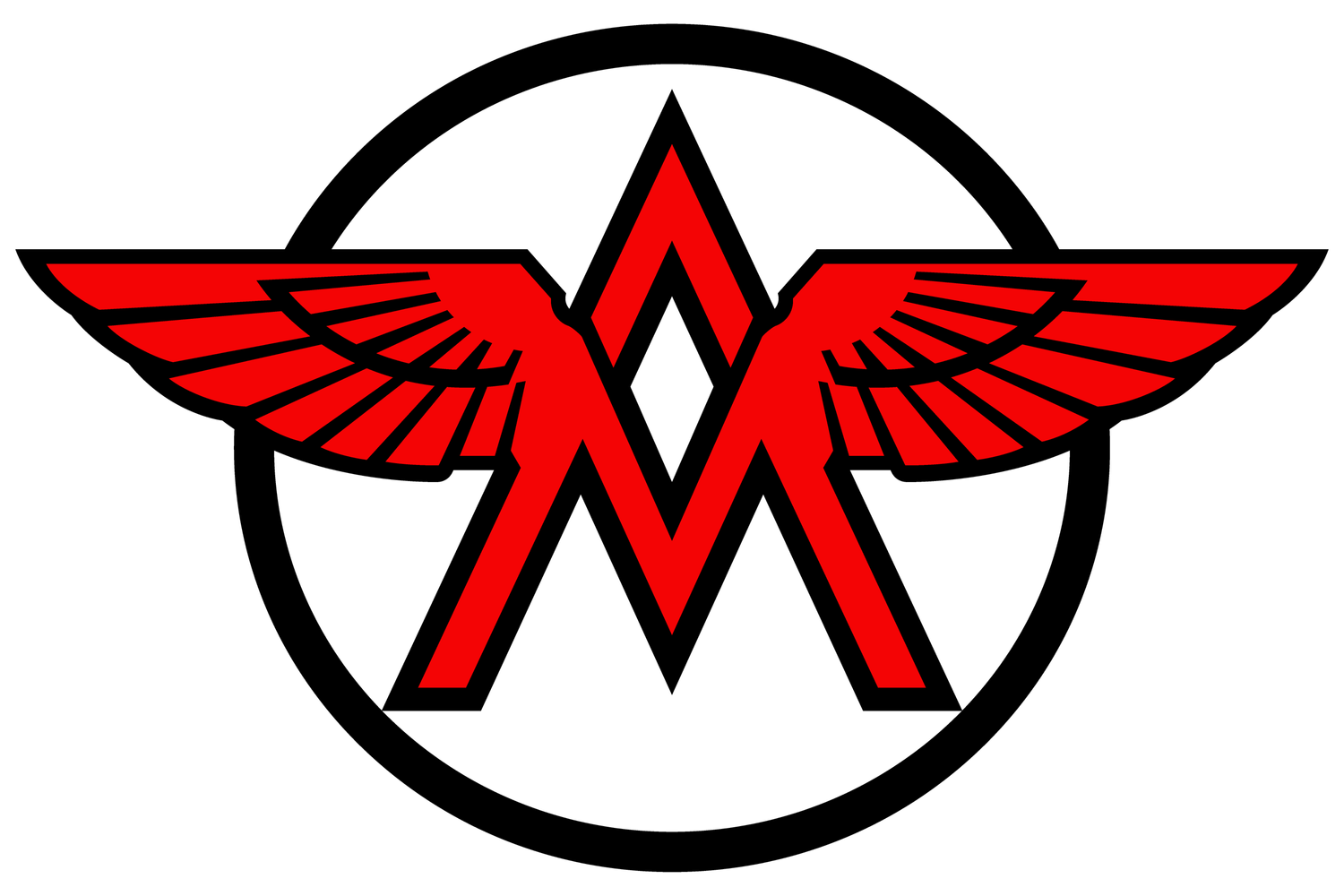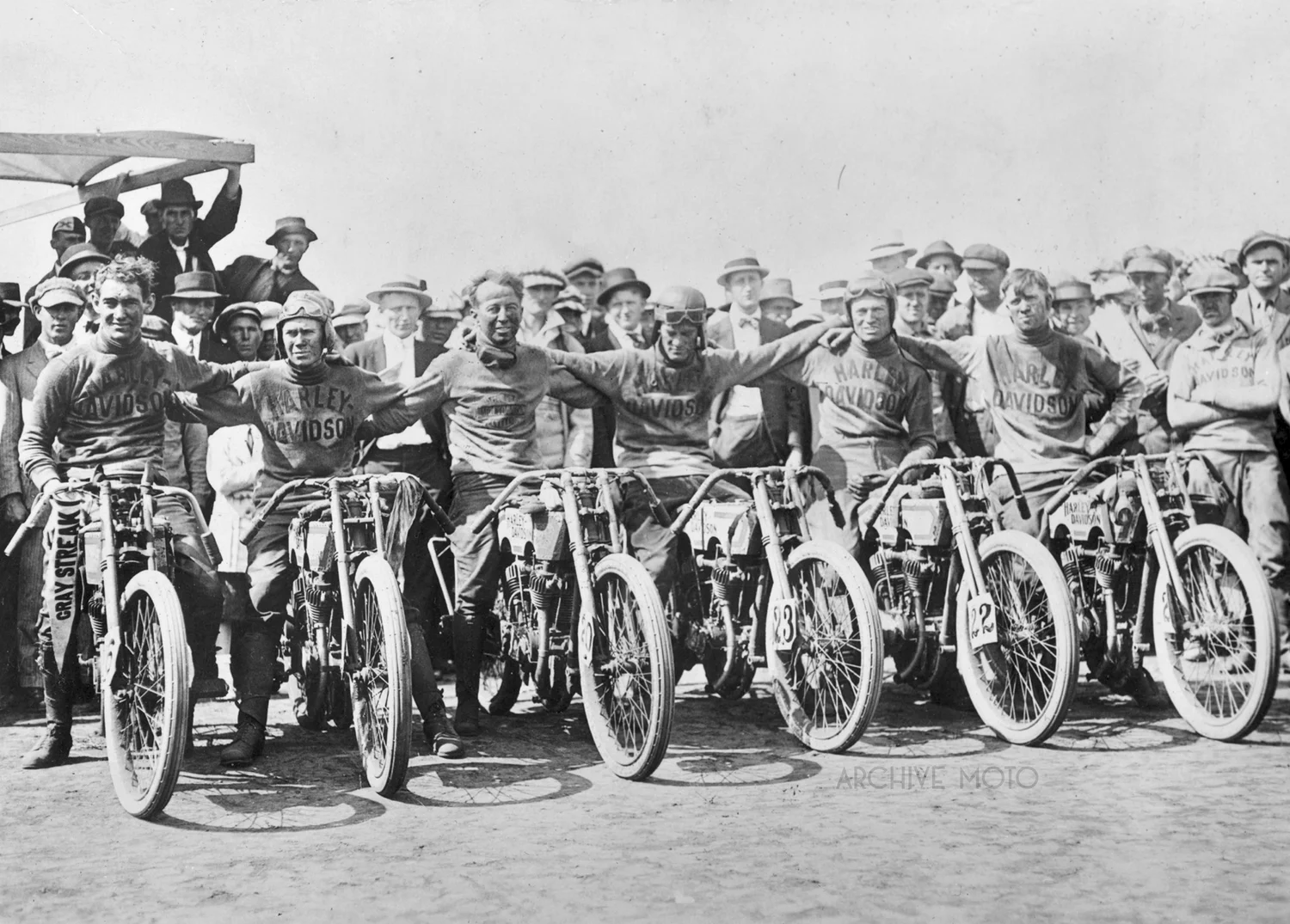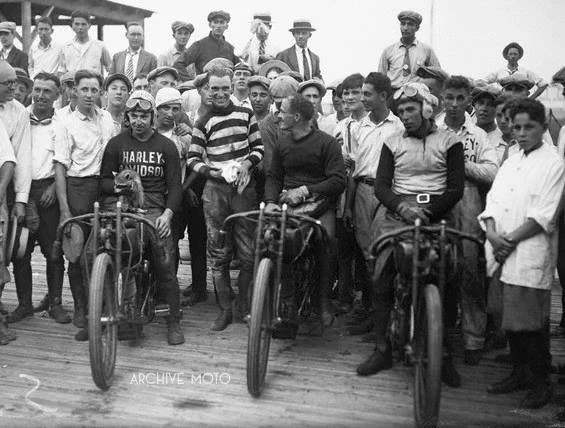Here is one directly from the pages of Georgia Motorcycle History, available now just CLICK HERE.
Motorcycle competition has taken many forms since the first two machines were pitted against one another at the turn of the 20th century. From the modern, on-the-edge action of MotoGP to the near vertical hill climbs of the 1930's. From the multi-day endurance events to the lightening fast drag strips. The beach races, flat tracks, salt flats, massive super speedways, nail bitting TT races, horse track sprints, and the thrilling dashes over the wooden slivers of the American motordromes, it is remarkable how the sport has evolved and varied in the one hundred some-odd years since its inception. But among all of the legends, icons, and fallen heroes that dedicated their life to rocketing around the varied venues of the sport, each one had to start somewhere.
In the beginning it was the local motorcycle clubs, the brotherly band of enthusiasts that bolstered a rapidly expanding professional industry by organizing and promoting events for young aspiring demons to test their skill against one another at local horse tracks and on the small backroads of America. Here, four men, and four different makes of machine, a Pope, an Excelsior, an Indian, and a Harley-Davidson take to the line for a small-town road race in Tebeauville, modern day Waycross, Georgia in southwest of the state, sometime in the mid-teens. Who do you think won?
Read more about the early evolution of motorcycle racing in the pages of Georgia Motorcycle History: The First 60 Years 1899-1959, get you copy today HERE
Today's post is an open question to the community. Another forum find, I recently stumbled upon this little gem. It is credited in Rin Tananka's Harley Davidson Book of Fashions as August Walters (August E. "Blick" Wolters) onboard a single cylinder Harley-Davidson racer at the Legion Ascot Speedway, January 8, 1927. However, that is no ordinary, run of the mill factory Peashooter of late 1920's acclaim. It is a blanked-off Cyclone twin in a keystone frame with what appears to be a Merkel fork, a real (fast) frankenstein. So who was August Walters and where did he come across such a wonderful abomination. Was the machine created by Walters, and how did it stack up against legends like Joe Petrali riding the latest overhead valve Harley Davidson factory singles, affectionately known as Peashooters? I welcome any and all information and speculation friends.
UPDATE: Since posting this request for information earlier today those treasured and seemingly all knowing enthusiasts that occupy the web have piped up and filled this machine's truly remarkable pedigree. August E. “Blick” Wolters was indeed a privateer racer in the late 1920’s and manufactured this odd bird on his own. Unable to acquire a factory single “peashooter" from either Harley-Davidson or Indian, Wolters retooled his Cyclone twin by removing the rear cylinder, machining a new barrel and domed piston, and retrofitting an oil pump off of an Indian to the former rear cylinder’s overhead camshaft. Wolters himself was quite the character, having run Henderson’s in Los Angeles area events as far back as 1916. Most notably, Wolters set a new record in March of 1918 by piloting his Henderson 4 up the 9-mile toll road up Mt. Wilson. He covered the distance in 26 minutes 24 seconds despite having a spill halfway up the mountain which rendered his clutch useless and permanently retarded his spark advance. Wolters again made the headlines a few weeks later when he took another Henderson 4 for a couple of laps over the tracks of LA’s largest roller coaster… but I digress. After reconfiguring and down-engineering his powerful Cyclone engine Wolters then squeezed the now single-cylinder power plant into a mid 20’s short coupled Harley Davidson frame, he also added a rigid Flying Merkel fork, a popular front end among speed demons. Thus the machine that a smiling Blick Wolters poses with in this photo from the January 1926 races at the Legion Ascot Speedway was born, but the story does not end there. Wolters continued racing the machine, until it ultimately became a part of the collection at Harrah’s Automotive Museum in Reno, Nevada where it remained for some time. The machine was then restored and the Cyclone engine put back to its original, factory configuration. In the early 1980’s the Harrah’s collection was sold and the machine changed hands between collectors a handful of times in recent decades. In 2012 this odd racer, made by the hands of August E. Blick Wolters was stolen in an unnerving armed home invasion, the machine remains missing.
Thank you everyone who helped fill me in on this amazing story.
How many times have you seen this picture? How much do you know about it? How about a little background on one of the most reposted and iconic images in motoculture?
In February of 1921 Otto Walker, one of the original members of Harley Davidson's legendary Wrecking Crew threw his leg over a state of the art banjo 2 cam 8-valve factory racer and became the first man to win a race at an average speed of over 100 mph on the boards of the Fresno Speedway.
The image is used most often as the quintessential representation of board track racing, however by the 1920's the tight, steeply-banked circular motordromes had all disappeared. Although the 1-mile long Fresno Speedway was surfaced in the same manner as the early circular motordromes, it was oval in shape with flat straightaways and banked corners, as was the standard construction style after WWI. The last of the circular dromes was built 7 years prior in 1914, and the sanctioning body in America, the M&ATA had outlawed races on any tracks less than 1 mile in length in 1919.
Otto piloted his two-wheeled rocket to just over 107 mph in the 1-mile time trail, and won the 50-mile at just over 101 mph. Walker also earned the title of winning the most races at a single event that same day, sweeping all categories at over 100 mph each. One odd detail, after serving as an aeronautic mechanic in France during the Great War Walker acquired a rather unique crested German pilots helmet which he debuted upon his return to professional racing in 1919. In what is arguably one of the most iconic images in motorcycling history Walker's signature helmet is missing, Id like to think for aerodynamic purposes.
Undoubtedly one of the most iconic images from the early days of the Harley-Davidson racing program is the shot of veteran racer Ray Weishaar holding a small pig at the 1920 labor day race in Marion, IN. Many point to those images of Ray and his pet pig as the origin of the Harley "Hog” association, but that story is one readily available from a number of sources. What offers a bit more intrigue are the handful of snapshots capturing other racers with an array of different critters, the ones that didn’t stick. Could it be that during the high stakes relaunch of professional motorcycle racing in America there was a race off of the track, a mascot war? Perhaps it was not so dramatic, but there are a few photographs, like one of Maldwyn Jones holding a coyote pup, or another image of Walt Higley holding a turtle and Ralph Hepburn holding a rabbit at the 1921 Dodge City race that provide another fascinating detail of post-war racing culture. Take a close look at this image and you may just spot such a critter.
Taken at the massive 1.25 mile long Baltimore-Washington Speedway in Laurel, MD on September 7, 1925, this photo captures the Harley-Davidson team posing for a victory shot yet again as they steamrolled their way through the ’25 season. In a series of AMA National Championship races held on the boards in Laurel, the last gentlemen of Harley’s legendary Wrecking Crew pose on board their powerful factory two cam machines after having put on a clinic for the crowd and competition. Jim Davis and Harley-newcomer Joe Petrali were on a tear, each lowering records as they traveled the country, and the races in Laurel were no exception. Davis took the 5 Mile National Title in a record time of 2 minutes 45 seconds, a blistering average speed of 111 mph. It was Joe Petrali, who had only just joined the crew after a mixup with his Indian machine at the Altoona track two months prior that did the real cleaning up. Smoking Joe took the 10 Mile, the 25 Mile, and the 50 Mile National Championship titles breaking two previous speed records, one of which being the milestone 10 Mile speed of 101 mph set by one of the Wrecking Crew’s founding fathers, Harry “Otto” Walker back in 1921 at the board track in Fresno.
Here we see the victors of the Harley-Davidson crew at Laurel that day, along with a rather odd furry companion. A stoic Joe Petrali is farthest to the right, and Eddie Brinck who came in second behind Smoking Joe in each event is in the middle. Jim Davis, winner of the 5-mile championship title is standing in the stripes, and finally, Bill Minnick, who 3rd place in the 50 Mile race is on the left along with the not-so legendary Harley-Davidson raccoon. Where he acquired his raccoon remains a mystery, but the mammal bandit is yet another mysterious pet in the menagerie of Harley-Davidson team mascots from the early 1920’s.





